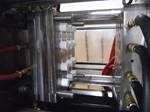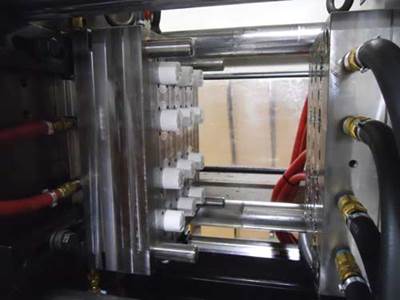Collapsible Core Technology Saves Time, Maintenance and Money
Levent Uzkan, President of Flavor Shakes, needed a more efficient way to mold the caps to the jars the company produces, so he turned to collapsible core technology.
Levent Uzkan—President of Flavor Shakes (Dallas, TX)—a manufacturer of containers that also provides food packaging services—needed a more efficient way to mold the caps to the jars the company produces, so he turned to collapsible coretechnology from Romeoville, IL-based Collapsible Core, Inc.
Doing so has not only reduced cycle times and maintenance, it has also saved the company thousands of dollars. Flavor Shakes’ containers are filled with sugar sprinkles as well as spices—and shipped to places such as Disney World, grocery store chain Aldi’s and food company World Market. Uzkan outsources his molds, and runs them on his own presses—nine
injection molding machines ranging from 15 to 220 tons.
Uzkan wanted a better method to produce the caps to his containers, as the screwing/unscrewing design often extended cycle time. An unscrewing tool has a rack mechanism that cycles between six seconds for a single thread to 30 seconds for eight threads, whereas a collapsible core mold cycles similar to a stripper mold by opening and closing two to three seconds to eject the part. He began to work with Garry Zydron, president of Collapsible Core, Inc. and together they developed a prototype using collapsible core technology.
According to Zydron, collapsible cores work by expanding spring-loaded fingers with a center pin into the shape of the cap, with threads that are undercut; or a part, that has an undercut detail on the side, such as an O-ring groove, that is being molded. After the part is molded, the pin is withdrawn and the fingers collapse toward the center, allowing the part to be ejected.
“The accuracy of the cores allows our part to hold tighter tolerances, allowing the mold to have a longer life with fewer production slow downs,” Zydron elaborates. “A straight pin design allows more contact surface between the center pin and the collapsible core—improving thermal transfer.”
Details like thin-wall parts with shut-offs, peel-away strips, interrupted threads, safety breakaway rings or O-ring grooves can now be designed on the inside of the part instead of using traditional slides or more complex mold functions, Zydron adds. “The collapsible core offers the smallest footprint available—allowing for more cavities in the same size press,” he says. “The direct benefit is that the user can increase production by producing more parts per cycle.”
Uzkan maintains that by using the collapsible cores to replace the screw-type mechanism, inside the cap, when the mold opens up, the four pieces come together and the parts fall off easily, which eliminates flash. “Plus, since the collapsible core eliminates the screwing and threading mechanism
on a mold, there is no maintenance since there is no need for any power to go to the mold,” he comments. “Cycle times are also reduced since there is no waiting for the mechanism to unscrew with the collapsible core. “By eliminating all of the gearing and motorized mechanical parts and replacing them with collapsible cores, we saved $17,000 in the cost of the tool, and the collapsible cores cost $3,000,” Uzkan concludes. “This is significant savings.”
Related Content
Moldmakers Deserve a Total Production Solution
Stability, spindle speed and software are essential consideration for your moldmaking machine tool.
Read MoreThe Benefits of Hand Scraping
Accuracy and flatness are two benefits of hand scraping that help improve machine loop stiffness, workpiece surface finish and component geometry.
Read MoreHands-on Workshop Teaches Mold Maintenance Process
Intensive workshop teaches the process of mold maintenance to help put an end to the firefighting culture of many toolrooms.
Read MoreMachining Center Spindles: What You Need to Know
Why and how to research spindle technology before purchasing a machining center.
Read MoreRead Next
Justifying a Mold Rebuild Using Collapsible Core Technology
Technical advantages prove there is ample reason to explore rebuilding—or retrofitting—traditional unscrewing tools.
Read MoreReasons to Use Fiber Lasers for Mold Cleaning
Fiber lasers offer a simplicity, speed, control and portability, minimizing mold cleaning risks.
Read MoreHow to Use Strategic Planning Tools, Data to Manage the Human Side of Business
Q&A with Marion Wells, MMT EAB member and founder of Human Asset Management.
Read More












.jpg;maxWidth=300;quality=90)









.jpg;maxWidth=970;quality=90)